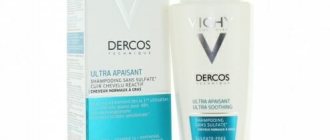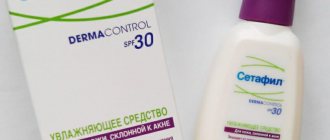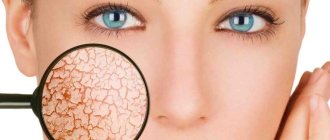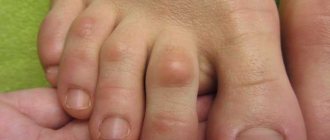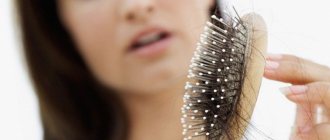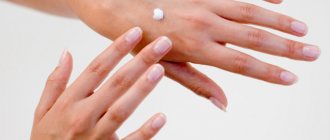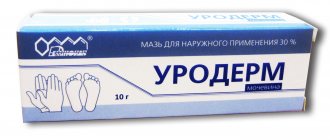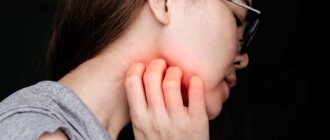Often you can meet people with an interesting facial expression: it is asymmetrical, as if distorted, emotionless, perhaps accompanied by small muscle twitches.
All these signs are united by a common name - facial neurosis. This condition can have a different nature of occurrence and is provoked by both objective reasons and factors of a psychogenic nature.
Unusual sensations
It happens that a person can feel phenomena in the face and head that are unusual for the usual state. They are called paresthesias and are manifested by the following symptoms:
- tingling;
- burning;
- "goosebumps"
- numbness;
- itching and rashes.
Often facial paresthesias have an organic basis and become a sign of the disease:
- neuritis, neuralgia of the cranial nerves;
- multiple sclerosis;
- stroke and other circulatory disorders in the brain;
- shingles;
- migraine;
- diabetes;
- epilepsy;
- hypertension.
In certain cases, unusual sensations are observed in certain parts of the face. For example, similar manifestations in the language may appear for the reasons listed above, but often have a different etiology. They are provoked by cancer of the tongue and larynx, as well as trauma by a splintered tooth or denture.
Dental procedures cause numbness and other unusual feelings, especially after tooth extraction. Another reason for their appearance may be an uncomfortable position during sleep or an unsuitable pillow. But the sensations caused by such phenomena usually pass soon.
Another group of provoking factors consists of psychogenic and neurogenic disorders.
Which doctor should you contact if you have itching?
In case of localized skin itching, you should consult a dermatologist. Sometimes the allergic origin of itching is undoubted; in this case, it is recommended to visit an allergist-immunologist. Women with itching in the genital area need to consult a gynecologist.
If the skin itching is generalized, then first of all you should consult a therapist. Most likely, a comprehensive examination will be required to determine the cause of the itching.
Qualified and experienced doctors at Family Doctor will help you identify the cause of itching and prescribe an effective course of treatment.
Disorders of facial innervation
A neurotic face may develop due to damage to the nerves that innervate it. Most often these are the trigeminal and facial nerves.
The trigeminal nerve is the 5th pair of cranial nerves. It is the largest of all 12 pairs of these nerve fibers.
N. trigeminus arises symmetrically on both sides of the face and consists of 3 large branches: the ophthalmic, maxillary and mandibular nerves. These three large processes innervate a fairly large area:
- skin of the forehead and temples;
- mucous membrane of the oral and nasal cavities, sinuses;
- tongue, teeth, conjunctiva;
- muscles - chewing, floor of the mouth, palatine, tympanic membrane.
Accordingly, when it is damaged, pathological sensations arise in these elements.
Facial nerve – 7th pair of cranial nerves. Its branches surround the temporal and ocular region, the zygomatic arch, and descend to and behind the lower jaw. They innervate all facial muscles: auricular, orbicularis and zygomatic, chewing, upper lip and corners of the mouth, cheek. As well as the muscles of the lower lip and chin, around the mouth, the muscles of the nose and laughter, and the neck.
N. facialis is also paired, and is located on both sides of the face.
In 94% of cases, the damage to these nerve fibers is unilateral, and only 6% is a bilateral process.
Disruption of innervation can also be primary or secondary.
Primary is the lesion that initially involves the nerve. This could be hypothermia or strangulation.
Secondary damage develops as a consequence of other diseases.
Another reason for the development of facial neurosis is neurogenic and mental disorders. When unpleasant sensations in the face and head occur against the background of psycho-emotional arousal, shock, or as a result of stressful situations.
Facial nerve neurosis
Neuritis (neurosis N. Facialis) or Bell's palsy occurs due to inflammation of the nerve fiber. Reasons leading to this condition:
- pinched nerve as a result of narrowing of the channel through which it passes. This may be a congenital phenomenon or result from inflammation;
- hypothermia;
- other diseases and infections: herpes, mumps, otitis media, stroke, cancer, central nervous system infections;
- injury N. Facialis.
The onset of the disease is usually gradual. Manifested by pain in the behind-the-ear area. After a couple of days, neurological facial symptoms appear:
- smoothing of the nasolabial fold, drooping of the corner of the mouth;
- the face becomes asymmetrical with a skew towards the healthy side;
- eyelids do not droop. When you try to do this, your eye rolls;
- any attempt to show at least some emotion ends in failure, since the patient cannot move his lips, smile, or manipulate his eyebrows. Such manifestations can worsen to the point of paresis and paralysis of the facial muscles, that is, to partial or complete immobility of the affected part of the face;
- taste sensitivity decreases, salivation appears;
- the eyes are dry, but there is lacrimation when eating;
- hearing on the affected side worsens.
The severity of pathological symptoms depends on the degree and area of damage to the nerve fiber. If the disease is treated inadequately, complications may arise in the form of muscle contractures (immobility).
Since the disease is inflammatory in nature, its treatment is aimed at eliminating it. For this, the patient is prescribed hormonal anti-inflammatory drugs - glucocorticoids, as well as decongestants.
Other methods include:
- prescription of vasodilators and analgesics, B vitamins;
- anticholinesterase agents to increase nerve conduction;
- drugs that improve metabolism in nervous tissue;
- physiotherapy;
- massage, exercise therapy in the recovery stage.
And only in extreme cases, when conservative therapy is ineffective, neurosurgical intervention is resorted to.
Trigeminal neuralgia
This is another lesion of the nerve fiber structure, which is often chronic and accompanied by periods of exacerbation and remission.
It has several causes, which are divided into idiopathic - when a nerve is pinched, and symptomatic.
The main symptom of neuralgia is paroxysmal sensations in the form of pain on the face and in the mouth.
Pain sensations have characteristic differences. They are “shooting” and resemble an electric shock; they arise in those parts that are innervated by the n.trigeminus. Having appeared once in one place, they do not change localization, but spread to other areas, each time following a clear, monotonous trajectory.
The nature of the pain is paroxysmal, lasting up to 2 minutes. At its height, a muscle tic is observed, that is, small twitching of the facial muscles. At this moment, the patient has a peculiar appearance: he seems to freeze, but does not cry, does not scream, and his face is not distorted from pain. He tries to make a minimum of movements, since any of them increases the pain. After the attack there is a period of calm.
Such a person performs the act of chewing only with the healthy side, at any time. Because of this, compaction or muscle atrophy develops in the affected area.
The symptoms of the disease are quite specific, and its diagnosis is not difficult.
Therapy for neuralgia begins with taking anticonvulsants, which form its basis. Their dose is subject to strict regulation and is prescribed according to a specific scheme. Representatives of this pharmacological group can reduce agitation and the degree of sensitivity to painful stimuli. And, therefore, reduce pain. Thanks to this, patients have the opportunity to freely eat and talk.
Physiotherapy is also used. If this treatment does not give the desired result, proceed to surgery.
What happens and what causes itchy skin?
There are localized and generalized skin itching.
Localized skin itching
Localized
called itching concentrated in one place. Most often this itching is observed in the area:
- anus (for hemorrhoids, worms, inflammation of the rectum);
- external genitalia (in case of disease of these organs, as well as in women - during menopause);
- scalp (pediculosis).
Localized itching can also be caused by dry skin, insect bites and allergic reactions.
Itching all over the body
Generalized
(that is, widespread throughout the body) itching can be caused by various reasons, including:
- liver diseases (including viral hepatitis);
- endocrine diseases (for example, diabetes);
- some blood diseases;
- skin diseases;
- mental disorders;
- some oncological diseases.
Real life examples
Some famous people, whose fame sometimes trumpets all over the world, were also hostage to the pathology of the facial nerve.
Sylvester Stallone, who is known for his enchanting roles, was injured at birth. The actor's mother had a difficult birth and he had to be pulled with forceps. The result is damage to the vocal cords and paresis of the left side of the face. Because of this, Stallone had problems with speech, which became a reason for ridicule from his peers.
The actor grew up as a difficult child. But, in spite of everything, he managed to overcome his defect and achieve considerable success, although partial immobility of his face remained.
Domestic showman Dmitry Nagiyev received facial asymmetry, which was nicknamed “Nagiyev’s squint”, due to paresis of the facial nerve. The illness happened unexpectedly. As a theater student, one day he felt that his face was not moving.
He spent 1.5 months in the hospital to no avail. But one day in his room a window broke due to a draft. Fright provoked a partial return of mobility and sensitivity of the facial part, but the left part retained its immobility.
Migraine
This condition is accompanied by attacks of unbearable headache. It is also associated with disruption of the trigeminal nerve, or more precisely, with its irritation in one part of the head. This is where the pain is subsequently localized.
The onset of migraine includes several stages:
- initial;
- aura;
- painful;
- final one.
Paresthesia of the head and face appears with the development of the aura stage. In this case, the patient is bothered by a feeling of tingling and crawling, which occurs in the arm and gradually moves to the neck and head. The person’s face becomes numb and it becomes difficult for him to speak. I am concerned about dizziness and visual disturbances in the form of light flashes, floaters and a decrease in the field of vision.
Facial paresthesia is a precursor to migraine, but often the attack occurs without the aura stage.
General principles of drug therapy
If itching occurs, you should go to the hospital. A dermatologist deals with skin diseases. He will order laboratory tests and make a diagnosis that will help you choose the most appropriate treatment.
Universal anti-itch medications:
- antihistamines - Cetrin, Suprastin and Fenkarol;
- local ointments - menthol;
- boric acid, used in the form of gauze compresses.
Psychogenic causes of facial neurosis
Undoubtedly, disturbances in facial sensations quite often become a consequence of pathology of internal organs and blood vessels.
But often they are caused by psychological disorders and pathological thoughts that arise in our heads.
Facial paresthesias can be situational in nature and develop during episodic nervous excitement: as a result of quarrels, prolonged and intense screams. Such phenomena cause overstrain of the muscles, especially the cheeks and those located around the mouth. As a result, we experience facial numbness and even mild soreness.
The feeling of fear causes us to breathe quickly and shallowly, or to hold our breath. Disturbances in the respiratory rhythm can also provoke impressions that are atypical for us. A feeling arises that is characterized as a “chill running through.” Moreover, it is more concentrated at the roots of the hair. In this case they say: “chills to the marrow of the bones.” The face also becomes cold, a slight tingling appears in its area.
Such phenomena are disturbing when we are overwhelmed by strong emotions. But they accompany people suffering from mental disorders systematically.
A special type of neurotic facial manifestations is a nervous tic. It is characterized as an uncontrolled and systematic contraction of the facial muscles.
The disorder more often accompanies men. And it manifests itself with the following symptoms:
1.Motor:
- frequent blinking, winking;
- setting the lips with a tube;
- nodding head;
- constant spitting or sniffing;
- opening or upturning of the corner of the mouth;
- wrinkling of the nose.
2. Vocal:
- screaming;
- grunt;
- coughing;
- repetition of words.
There are also signs – precursors – that signal the appearance of a tic.
These include itching, facial heat and other paresthesias. Naturally, these signs are considered pathological if they occur in an inappropriate situation. It happens that only the patient himself feels them, but they are not visible to others.
But often twitching and other nervous symptoms become noticeable by other people, and they cause a lot of discomfort to the patient.
Tics can be simple, when there is only one symptom, or complex, which combines several manifestations.
The most common, main cause of tics is mental stress. It can be caused by a strong stress factor of one-stage action. Perhaps you were very scared of something, or broke up with your loved one. That is, the shock was so strong for you that your nervous system lost control.
Or, on the contrary, disorders develop as a result of prolonged monotonous exposure. Symptoms often appear due to lack of sleep and overwork.
Their duration varies. A situational nervous tic disappears a few hours or days after the cause is eliminated. In another case, it persists for years or haunts the patient throughout his life. In such a situation, in addition to eliminating the provoking factor, subsequent psychological work with the patient is required. This type of disorder is called chronic.
A nervous tic can be one of the signs of mental disorders such as neurosis, obsessive thoughts and phobias, depression.
Another group of provoking factors include:
- diseases - stroke, brain injury, infections or poisons;
- neurodegenerative diseases - Huntington's chorea. Characterized by destruction of brain tissue. Accompanied by uncoordinated, sudden movements, as well as neurological disorders of the face. Of these, the first sign is slow eye movements. Then a muscle spasm of the face occurs, which manifests itself in grotesque facial expressions - grimacing. Speech, chewing and swallowing are impaired;
- burdened heredity;
- parasitic infestations;
- eye fatigue due to prolonged eye strain;
- unbalanced diet, when the body receives little magnesium, calcium, glycine. These elements participate in the normal conduction of nerve impulses and are responsible for the coordinated functioning of the nervous system.
Possible causes of itching and treatment
From a medical point of view, itching is a complex of unpleasant sensations that may include:
- hyperemia;
- irritation;
- tingling;
- burning;
- rashes;
- swelling and other local reactions.
Itching on the skin of the face causes negative aesthetic manifestations: areas of peeling and scratching may occur.
The reasons for an itchy face can be skin diseases and systemic pathologies, as well as psychological problems.
Dermatitis
There are three main types of the disease.
Contact
The cause of this type of pathology is the direct effect of the allergen on the skin. Such irritants can be cosmetics or unsuitable detergents.
The use of medicinal ointments can also cause itching and redness. Rashes appear around the mouth as a result of contact with toothpastes.
In men, irritation often appears after shaving due to mechanical friction or unsuitable cosmetics.
Treatment consists of eliminating the allergen and taking local and general antihistamines prescribed by the doctor.
Allergic
The disease is caused by various physical and chemical irritants. It appears as eczema, most often in the cheeks, neck or forehead.
Caused by the following reasons:
- consumption of certain foods and medications;
- external irritants: dry air, weather conditions, street dust, pollen.
When making a diagnosis, it is necessary to find out the cause, and then eliminate any contact with the allergen. If this does not help, ointments or tablets with active ingredients such as loratadine, hydrocortisone, etc. are prescribed.
Atopic
Another name is neurodermatitis. Mostly it occurs in early childhood, and in adults it goes away on its own or transforms into eczema. Atopic dermatitis is chronic and difficult to treat. Accompanied by rashes on the neck and forehead, around the mouth and in the bend of the elbow and knee joints.
The reasons may be:
- hereditary factors;
- stress;
- unfavorable environmental conditions;
- vitamin deficiency, poor nutrition.
As a rule, the disease goes away with age. Otherwise, complex treatment is prescribed, which includes taking enterosorbents, probiotics, anti-allergenic drugs, the correct climatic conditions (sufficient humidity and low temperature, clothing for the season).
Excessive dry skin
Another common cause of itching. It can be congenital or acquired (due to the use of certain cosmetics). Alcohol-based lotions are a common cause.
Frequent washing with soap contributes to dryness, especially if it has an oil-dissolving or antibacterial effect.
To eliminate itching, you need to adjust your diet and drinking habits, and use moisturizing cosmetics.
Temperature influence
Depending on your skin type, itching may occur as a reaction to heat, excessive humidity, or cold. In this case, it is necessary to protect yourself with special creams; visiting saunas and steam baths is contraindicated.
Allergy to cold
The reaction to cold is thought to be related to anemia or thyroid dysfunction.
Demodicosis
The disease is caused by a parasitic microscopic mite that lives in the ducts of the sebaceous glands and hair follicles.
Most common locations:
- forehead;
- chin;
- brow ridges.
An infestation of mites causes the face to turn red, scales, swelling, and eye fatigue to appear.
If the disease is not cured in time, it can lead to loss of eyelashes, hair, and the appearance of severe acne. Coming out, the mite opens pores, which become a “gateway” for any infections, which provokes the appearance of styes, pimples and blackheads.
Treatment is complex, including the use of anti-inflammatory creams, antibacterial ointments, and antiparasitic drugs. Metronidazole, Tinidazole, sulfur ointment, yellow mercury or ichthyol are prescribed. Drugs are used that normalize the functioning of the gastrointestinal tract and strengthen the immune system.
Dermatophytosis
A group of infectious diseases caused by exposure to mold fungi. There are about 30 species that can pose a danger to humans. Infection occurs through contact with sick people and animals through the soil.
Provoking factors:
- immunodeficiency state;
- long-term use of corticosteroids.
Treatment consists of the use of antifungal and antiseptic drugs, which are prescribed only after the pathogen has been identified.
Mental disorders
Some mental disorders, in particular psychoses and neuroses, may be accompanied by itching of the facial skin, which spreads to the entire body. Symptoms are more pronounced during exacerbation of diseases.
Ordinary stress can also cause skin irritation.
Treatment consists of taking sedatives, and in severe cases, psychotropic drugs.
Psoriasis
Psoriasis is a chronic skin disease that appears as areas of redness and scaling.
The disease may affect the face or other parts of the body. The pathology has specific foci, but the itching mainly spreads beyond them.
Medical science does not know exactly what causes the disease. The disease periodically goes through a state of remission and relapses, worsening during periods of nervous shock and certain seasonal changes.
Treatment is carried out with local drugs, most often with ointments: sulfur-tar, salicylic, naphthalene, etc. Herbal medicine and the use of Cyclosporine or Acitretin are prescribed.
Seborrhea
It primarily affects the scalp, but sometimes appears on the face and entire body. A provocateur is considered to be a malfunction of the sebaceous glands caused by a disruption in the production of hormones.
The disease often occurs in adolescence and old age.
For therapy, calcium chloride, corticosteroids, sodium thiosulfate or antibacterial ointments are used. It is possible to use alcohol tinctures or solutions.
Herpes and papilloma
The cause of itching on the face may be internal infections. Thus, the papilloma virus and herpes are chronic, which persist in the human body throughout life and are characterized by periodic exacerbations.
Herpes is accompanied by a vesicular rash that begins with itching and redness. After some time, the affected area begins to swell. If you apply an antiviral ointment based on acyclovir in time, you can prevent the development of further symptoms.
Some types of HPV are causative agents of cancer. To determine the type of virus, you need to take a blood test. This information will help you take measures to prevent infection of your loved ones and help your doctor diagnose a precancerous condition in a timely manner.
Skin diseases
Skin diseases manifest themselves as rashes, nodules, blisters, spots, and peeling. The following pathologies can provoke similar symptoms:
| Disease | Description | Treatment |
| Eczema | A chronic disease characterized by redness of the epidermis, swelling and cracks | The therapy is complex, using: hormonal drugs, vitamin complexes, sedatives, immunomodulators, antifungal and antibacterial ointments (depending on the cause) |
| Hives | A disease caused by exposure to an allergen that results in the formation of a raised rash | Treated with local and general antihistamines |
| Lichen planus | Red-purple scaly plaques with accompanying itching. The disease is classified as a disorder of the immune system, the exact cause of which is unknown. | For limited rashes - topical glucocorticosteroids |
| Folliculitis | Inflammation of hair follicles | It can have different etiologies, so treatment depends on the pathogen. Antibacterial, antifungal drugs, ultraviolet radiation, etc. are used. |
| Pruritus | Small nodules on the skin, in the center of which a bubble forms. The disease is characterized by severe itching and is caused by exposure to allergens. | You should avoid eating fruits and vegetables that can cause allergies; sanitize foci of chronic infections in the body |
| Prickly heat | A disease caused by sweat remaining on the surface of the skin. Occurs during hot periods or due to poor personal hygiene. Often appears in young children dressed inappropriately for the weather. Accompanied by the formation of small nodules with intense itching or vesicles (bubbles with clear liquid inside) | An ointment with dexpanthenol or zinc oxide is prescribed |
| Scabies | A contagious disease caused by parasites that make passages in the skin | Sulfur-based ointments and antiparasitic drugs are indicated |
Internal illnesses
Skin irritation is accompanied by pathologies of the kidneys, liver, stomach or intestines.
A common cause of itchy skin is hepatitis or other serious liver damage. With such diseases, the level of bilirubin increases, entering the capillaries and causing irritation.
A sign of malfunction of the internal organs is widespread itching. The skin is mostly unchanged: there is no change in color, peeling or rash.
These pathologies include:
| Cause | Description | Treatment |
| Diabetes | The initial symptoms of the disease are intense itching and thirst. Itching appears not only on the face, but also in the anus and genitals | It is necessary to control sugar levels, take medications to lower glucose levels, and eat foods with a low glycemic index |
| Hyperthyroidism | The metabolism accelerates, the temperature rises, which causes irritation (feeling like the face is burning and swollen). Itching is also possible with organ hypofunction, which is associated with excessive dry skin | It is necessary to use moisturizing creams and ointments, as well as treat the underlying disease |
| Kidney failure | Nerve fibers are damaged, the threshold of sensitivity of the endings decreases. Even a weak irritant provokes unbearable itching | It is important to normalize the level of calcium in the body, minimize contact with irritants, and moisturize the skin |
| Polycythemia | With this pathology, an increased number of blood cells are produced, causing the formation of blood clots. Itching worsens after contact with water | Antihistamines are prescribed for local and general use |
| Iron-deficiency anemia | Disease associated with impaired hemoglobin production | Itching is reduced when taking iron supplements |
| Lymphogranulomatosis | An oncological disease that begins with enlarged lymph nodes in the neck. The first sign is itchy skin, which gets worse in the evening. The skin is predominantly itchy in the affected area | Treatment is symptomatic |
| Immunodeficiency virus | Itching occurs due to infection with other diseases due to damage to the immune system | Treatment depends on the cause of the discomfort: it can be antibacterial, antiviral, antifungal, etc. |
| Dehydration | Develops against the background of malnutrition or intestinal infections. Skin becomes excessively dry | Replenishing water balance, introducing rehydration solutions, moisturizing creams |
Some types of prostate, lung, and breast cancer may be itchy.
Pregnancy and menopause
Facial itching often occurs in pregnant women. It can be a symptom of skin diseases, including:
- Prurigo of pregnancy (prurigo) . Red skin rash that appears on various parts of the body.
- Itching of pregnant women . Occurs due to overstrain of the liver during this period.
Itching usually appears in the later stages and goes away after childbirth. Treatment is carried out by a general practitioner together with an obstetrician-gynecologist. Antipruritic ointments are most often prescribed.
This symptom often occurs during menopause. The reasons are a decrease in estrogen production and an imbalance of other hormones. In this case, you need to consult a doctor to prescribe hormone replacement therapy.
Itching in children
In children, itching in various places, including on the face, usually develops against the background of an allergic reaction, prickly heat, or an infectious lesion. Treatment depends on the cause, but all medications must be approved by a pediatrician.
A common cause of itching is atopic dermatitis, the treatment of which takes a long time and consists mainly of an allergen-free diet.
Senile (senile) itching
The disease predominantly develops in men after 60 years of age. Doctors believe that the cause is physiological phenomena in the epidermis caused by old age, but the exact cause of senile (idiopathic) itching is unknown.
Courses of tranquilizers, antihistamines, hormones, etc. are prescribed. Diet is recommended.
Other reasons
Other factors that can cause itching include:
- Medications (especially if they are taken on their own, without the supervision of a doctor, or there is a need for long-term use). If possible, medications should be discontinued or the dosage reduced. Enterosorbents are used to remove toxins from the body.
- Ultraviolet irradiation . It causes first-degree burns, which are accompanied by redness and itching. Treated with ointment based on dexpanthenol.
- Bad habits . Smoking and alcoholism lead to disruption of the nervous system. Treatment consists of giving up bad habits.
- Eating disorder . Itching is caused by excess smoked, fatty and fried foods.
- Insect bites: bedbugs, mosquitoes, lice, fleas, bees, wasps, etc. In this case, a nodule forms at the site of the bite against the background of swelling, redness and an increase in local temperature. Sometimes in the center you can see the bite site, which looks like a black dot. Allergy sufferers have a particularly difficult time dealing with such bites.
- Irritation from chemicals: paints or fabric coatings, plant sap, metals.
Nervous tics in children
There are several types of such disorders in childhood.
Transient tic disorder begins to manifest itself during early school age. Its duration ranges from 1 month to 1 year. Motor types of tics occur more often. Mainly typical for children with developmental delays and autism.
Chronic disorder occurs before age 18. And lasts from 1 year and above. In this case, either motor or vocal tics develop. The earlier the pathological symptoms appear, the easier and faster they pass.
Tourette syndrome is a multiple tic disorder characterized by both motor and movement types. A serious disease, which, however, softens with age.
A special type of disease, which is also characterized by signs of the nervous type, is minor chorea. It develops against the background of infections caused by streptococcus: sore throat, tonsillitis, rheumatism. Accompanied by pathological changes in nervous tissue.
Along with hyperkinesis, emotional instability, irritation, restlessness and anxiety, this condition corresponds to neurotic changes in the face. They are expressed in tension and spasms of the facial muscles, which is often mistaken for grimacing. There is also a spasm of the larynx, manifested in inappropriate screams.
At school, such children, not knowing the true cause of facial hyperkinesis, and even in combination with increased activity, are reprimanded and kicked out of class. Such an attitude towards the child forces him to miss school classes and avoid going to school. Treatment for chorea minor, along with sedatives, includes antibiotics to fight infection and anti-inflammatory drugs.
A nervous tic leaves a heavier imprint on a child’s psyche than on an adult. It often causes anxiety and detachment, withdrawal, and even provokes depressive disorders. Causes sleep disturbances, speech difficulties, and learning difficulties.
Tic disorders lead to distorted self-perception and decreased self-esteem.
Parents of such children are advised not to focus the child’s attention on the problem. On the contrary, they recommend finding ways to shift attention and increase self-esteem. A special place is given to support groups for such people and communication in general.
How to get rid of nervous tics
In order to free yourself from unpleasant sensations, you must first eliminate their problem. Sometimes all it takes is a good night's sleep. In another case, you need to change the situation for a while, get out of the destructive environment.
Among the auxiliary methods used are herbal soothing teas, baths with the addition of aromatic oils, swimming, walks in the fresh air or sports: running, yoga.
Add ingredients with a high content of calcium and magnesium to your menu. These include fermented milk products, buckwheat, bran bread, red fish, eggs, and meat. Vegetables and fruits include beets, currants, dried fruits, nuts and parsley.
If these foods do not fit into your diet, consider taking appropriate vitamin supplements. Do not overuse strong tea and coffee.
And most importantly: remain optimistic and calm in any situation!
In cases where the condition worsens, psychotherapy is sought. Cognitive behavioral therapy is especially effective in helping to stop tic disorders at the stage of their precursors.
Habit reversal therapy teaches patients movements that help prevent the development of neurological facial symptoms.
Medications include anticonvulsants and muscle relaxants, Botox injections, and antidepressants.
If the above methods are ineffective in combating nervous tics, they turn to deep brain stimulation. A device is installed in the GM that controls electrical impulses.
Traditional medicine
Folk remedies are also very effective in combating itching. The most popular of them are described in the table:
| Name | Properties | Ingredients | Recipe and application |
| Redness Eliminating Lotion | Prevents the progression of infection, accelerates the recovery process, removes flaking, itching, improves cell metabolism |
|
|
| Anti-irritation mask | Consists of natural components, stimulates regenerative processes, relieves itching, softens problem areas |
|
|
| Mask to restore damaged skin | Moisturizes skin damaged by UV radiation |
|
|
How to remove teak yourself
If a nervous facial tic is situational and is not too intense, but at the same time obsessive, you can try to get rid of it using physical methods.
One way is to try to disrupt the pathological muscle rhythm by overexerting it. For example, if your eye twitches, try to close your eyes tightly.
It is possible to calm an overexcited muscle through a light massage. Or apply cold to it. The temperature difference will also help. Wash your face alternately with cold and warm water.
Dermatillomania
Neurosis of the face and scalp can manifest itself in a behavioral disorder such as dermatillomania.
Its main manifestation is scratching the skin of the face and head, not because of itching, but because of dissatisfaction with its appearance. This also includes an obsessive zeal to squeeze out pimples, scratch off scabs, and pull out hair. Self-injurious actions cause a short-term feeling of pleasure, followed by feelings of shame, frustration, and dissatisfaction.
The face of such patients is covered with scars and scars due to constant trauma to the skin. This process is uncontrollable and can occur at any time of the day. But most often traumatic actions are carried out in front of a mirror.
Symptoms of the disorder also include the habit of biting the lips and mucous membranes of the cheeks. Patients are not deterred by the prospect of redness, bleeding, and scarring of the skin. They repeat the ritual day after day. It lasts from a few minutes to an hour.
Such actions can be provoked by feelings of fear, anxiety, and close examination of one’s skin because there is nothing to do.
Dermatillomania has been described as a state of addiction. It begins with concentrating on what the patient thinks is a skin defect. Gradually, attention is increasingly focused on this detail. A person begins to think that he is sick with something serious. This provokes irritability and nervousness in him, leading to obsessive actions.
The root cause of the disease is rooted in the psychological state of a person and lies in self-dissatisfaction, anger, feelings of shame and malice. Traumatic rituals are a way of punishment, self-flagellation.
Treatment of this pathology requires the intervention of a psychotherapist and a dermatologist.
The main method of treating addiction is psychotherapy, in particular cognitive behavioral therapy.
Yoga, physical exercise, relaxation procedures, as well as any hobby that absorbs a person and helps redirect attention will help reduce anxiety, distract and relax.
The help of a dermatologist is necessary to eliminate skin lesions in order to prevent infection and reduce the degree of dermatological defect.
Neuroses
This is a large group of diseases, manifested primarily in psycho-emotional disorders, as well as malfunctions of the autonomic nervous system. They do not cause pathological disorders of the nervous tissue, but have a significant impact on the human psyche.
There are several types of disorders in which the symptoms are visible.
Muscular neurosis is manifested by muscle tension, spasm and convulsive twitching. Neurosis of the facial muscles makes itself felt with the following manifestations:
- nervous tic;
- lip tension, clenching;
- convulsive contraction, the face seemed to move;
- tingling, burning sensation;
- muscle pain;
- Tension of the neck muscles is manifested by a feeling of lack of air, a lump in the throat.
When we find ourselves in a stressful situation, our body produces stress hormones. They, among many other reactions, cause muscle tension. Now imagine, if we are exposed to chronic stress, what happens to our muscles, and specifically to the muscles of the face. Being systematically in hypertonicity, they overexert themselves. This is what causes their nervous twitching, spasms, and convulsions.
Another type of neurosis is skin. It causes paresthesias in the facial skin of the following type:
- severe itching, burning in the facial and scalp without clear localization;
- sensation as if something were touching the face. And it's terribly annoying;
- the appearance of red spots on the face and neck. Possible rash.
The causes of such phenomena are nervous and mental overstrain, chronic stress, sleep disturbances, as well as disruptions in hormonal regulation.
With neuroses associated with disruption of the autonomic nervous system, various manifestations may also occur. Malfunctions in the functioning of the vascular network occur, and a vascular neurotic disorder develops.
Vascular neurosis of the face is manifested by flaking and dryness, a feeling of tightness of the skin. She becomes pale, sometimes cyanotic, and her sensitivity worsens. In addition, sneezing appears, the nose is stuffy, the eyes become red and watery, the skin itches and itches. This indicates the development of vegetative-allergic reactions.
Determining the causes depending on the location of the itching
Its localization will help determine the exact cause of itching:
| Itchy area | Causes | Treatment |
| Eye area | The influence of atmospheric phenomena, allergic reaction, foreign body getting into the eye, stress, bright light, stale air, alcohol, demodex, barley, vitamin deficiency, conjunctivitis (more often in children), fatigue, infections | Eye wash, antiviral and antibacterial drugs, antihistamines and corticosteroids. Therapy depends on the cause of the pathology, which must be clarified by an ophthalmologist |
| Head | Parasites (lice and ticks, often found in children), stress, dry scalp, allergies, skin diseases, pathologies of internal organs | Comprehensive treatment of diseases of the skin and internal organs, parasite remedies, anti-dandruff shampoo, anti-allergic drugs and vitamins |
| Neck | Insect bites, exposure to atmospheric agents, rubbing with clothing and accessories, microdamages from shaving, allergic reactions, thyroid disease, fungal or skin mite damage, psoriasis | Treatment is carried out after a comprehensive diagnosis. These can be antipruritic, antihistamine, antiparasitic drugs. It is important to eliminate the irritating factor in case of allergies or mechanical stress |
| Cheeks | Food allergies, dry skin, mechanical stress (the habit of frequently rubbing your face with your hands), metabolic disorders, vitamin deficiency, alcohol abuse, smoking, fatty foods; taking medications, excessive sweating, allergies to pollen, insect bites, poor-quality cosmetics, burns or frostbite | Dermatological or antihistamines (after careful examination), use of protective creams |
| Cheekbones | Diseases and dry skin, stress, allergies, weather conditions, bad habits, frequent visits to the bathhouse or sauna, drug abuse, diabetes mellitus | Treatment depends on the specific disease: antiparasitic, antibacterial, antipruritic drugs, etc. |
| Nose | Allergic reaction, inflammation, large amounts of nasal hair, dry mucous membranes, skin diseases | The condition requires clarification of the cause and its treatment, most often it is not dangerous |
